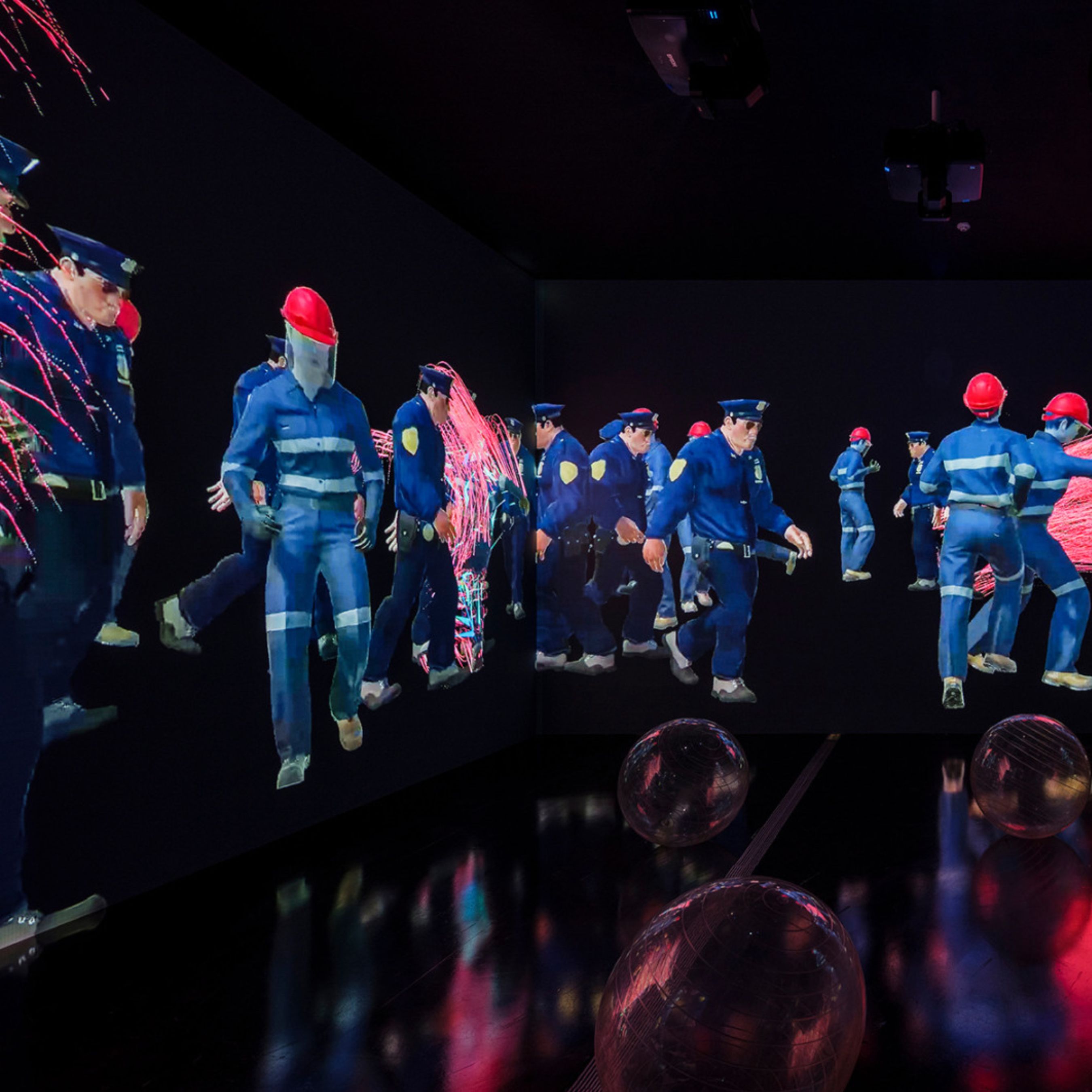
Hito Steyerl on How It Uses Us

Hito Steyerl on How It Uses Us
Artist and theorist Hito Steyerl discusses the material and geopolitical stakes of AI-generated imagery with Peter Bauman (Monk Antony). They explore the structural power of machine learning industries, the automation of creative labor and how art is both implicated in and resistant to these transformations.
Peter Bauman: In your book, Medium Hot (2025), you draw a sharp link between AI image-making and material consequences—emissions, extractive labor, even military applications. What compelled you to frame image-making in such physical, geopolitical terms? Why do you think this connection is especially resonant right now?
Hito Steyerl: Right now I am thinking more about the book form as such. Does it make sense to write books anymore if LLMs can do this much faster? As a writer, one cannot match the speed of automated text production. One is always lagging. Right now one would need to considerably fix any LLM-written book but probably not for very much longer.
Why is humanity automating the tasks that are supposed to be specifically fulfilling? Why are art and writing being automated at all?
From an art-making point of view, there is a continuity. First, tasks like writing or art making were deprived of income. Now they are being partly automated, the assumption being that they are both utter luxury and simultaneously worthless activities.
So in that sense it almost doesn’t matter whether I or other writers personally use AI or not (for the book I didn’t, except for one chapter, which is explicitly declared to be co-written with GPT-3).
The more important question is how it uses us and for what.
Peter Bauman: There’s a long arc of skepticism toward new technologies in art. What parallels do you see between today’s resistance to AI and the hesitance to embrace the computer—especially in the late ‘60s and ‘70s? That history goes at least back to E.A.T. and discussions of utopian-dystopian attitudes towards technology.
Do you see today’s anxieties about AI echoing the suspicion artists once had toward the computer or is this a fundamentally different kind of reckoning?
Hito Steyerl: There are quite a few current externalities to ML [machine learning] industries in relation to energy consumption, militarization, data colonialism, surveillance and automation. The climate crisis, for one, was not part of the situation in the 60s.

Another function of today's ML industries is providing authoritarian governments with aesthetic and bureaucratic tools. Whether it's fascist slop posted by the White House or DOGE intern commandos sucking data out of government agencies in order to automate them or to obtain kompromat on just about anyone, so-called AI is actively involved in boosting extreme right-wing surges in many parts of the globe, creating arms races and military destruction and massacres at scale.
ML-based technologies will also diminish the leverage of many wage-reliant workers, at least in the medium term. This applies not only to artists but mostly to any sort of cognitive, managerial or administrative labor—but not exclusively—including programmers, bankers, accountants, designers, lawyers, etc., but also, e.g., drivers.
If one takes previous technological upheavals as templates, potential benefits from potential productivity increases will not be redistributed voluntarily, as Daron Acemoglu and Simon Johnson argue in Power and Progress. There will need to be social movements in order to make it happen. In the short term, there will be further intensification of class divides.
There is definitely a huge potential for ML to bring about advances in many scientific fields—e.g. medicine or physics—which right now seems vastly underutilized and/or underfunded.
Why is machine learning technology deployed to spread deportation memes and not cancer research?
It´s not enough to answer that technology is neutral and can be used for anything. There is a specific constellation this time around, a monopoly in access and control that enables oligarchs to advance their interests using ML but presents their adversaries with more difficulties.
Peter Bauman: Speaking of oligarchs, given AI research’s close ties to Silicon Valley—an ecosystem shaped by powerful tech figures and shifting political dynamics—can a genuinely anti-fascist approach to AI still be possible?
Hito Steyerl: ML-based automation is great to prevent immigration, especially qualified immigration or against any sort of labor, organized or not. It also removes many of the traditional arguments for democracy, like the one that States are well advised to grant people equal opportunities in order to identify talent. So if talent is no longer needed, one can just proceed with not only Habsburgian datasets but just plain Habsburgs, right?
According to this ideology, a monarchy is fully feasible because any idiot is able to rule anything using some proprietary technology.
The interest of anti-fascists is to oppose autocracy or the rule of inbred Habsburgs, etc. Do they command data centers, supply chains, raw materials, data and energy provision? Is there any chance for them to control the stack? I can't see this at this point—not in the short term. Maybe there is a tactical function but not a strategic one. Maybe at some point down the line.

Peter Bauman: We were in touch recently about an article I sought your comment on for a The Art Newspaper piece about AI “breakers” and “builders.” You seemed to suggest breaking, or a more critical view, has been co-opted to rush art even more, saying, “Break things, move fast.” But many of the artists I admire incorporating deep learning into their practices (yourself, Anna Ridler, Sofia Crespo, Lauren Lee McCarthy, etc.) have a deliberate, slow pace.
Their processes often involve technical research, building and training their own dataset, training the algorithm, curating outputs, etc. How do you view this more idiosyncratic form of practice—neither sabotage nor solution, but something in between?
Hito Steyerl: Artists do whatever they do and it's usually fine and often very interesting. ML is a part of reality so it's obvious that people will engage with it. I do.
My issue is not with artists or nonstandard usage of ML—on the contrary!—but with the structure of the industry and how it instrumentalizes art for PR.
Peter Bauman: Do you have a definition for ML art that you like?
Hito Steyerl: I wouldn't even be able to define art in general, nor would I even want to.
Peter Bauman: ML researcher Phillip Isola has recently spoken about a Platonic Representation hypothesis, which argues that neural networks trained on different tasks (e.g. classification, colorization), modalities (e.g. vision, language), and architectures (e.g. ResNets, Transformers) still converge toward similar internal representations. Isola hypothesizes they do this because they are all modeling the same underlying structure of the world. What do you think of this hypothesis? Do you find anything useful—or dangerous—in this idea of convergent abstraction?
Hito Steyerl: I guess they converge towards the same because they are all trained on the same fake totality of internet wreckage and faithfully reproduce its inherent patterns and biases.
---
Hito Steyerl is an artist, filmmaker and writer known for exploring late capitalism through art, politics and philosophy. Steyerl has exhibited at major global institutions including the Centre Pompidou, Reina Sofía, ICA London and the Venice Biennale. She has authored books such as Medium Hot, The Wretched of the Screen and Duty Free Art.
Peter Bauman (Monk Antony) is Le Random's editor in chief.




